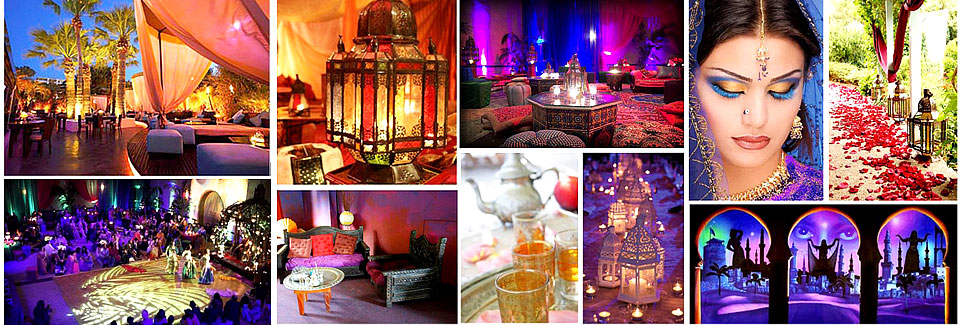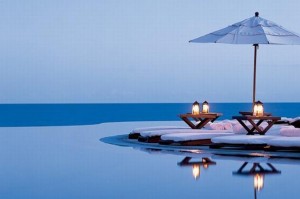No longer the preserve of maharajas, luxury travel abroad is a popular new pastime for India’s growing wealthy classes.
Have money, will travel. Until recently, this maxim applied to only a select few resident Indians, but as India wakes up to (and even begins to influence) the juggernaut of globalisation, more and more upwardly mobile citizens have the means to escape the everyday. Many are doing exactly that – and doing so in style. Luxury travel is no longer the preserve of maharajas and land barons, and as the traveller demographic opens up, so too do the farthest reaches of the globe in welcome.
 It wasn’t always like this. Centuries ago there was little concept of luxury travel in India; those who had money had farcical amounts of it, and might have kept a palace in each of the locations they most enjoyed. The British then came and built forts and luxury accommodations primarily for themselves which, over time, became increasingly used by India’s growing elite. For these travellers, travel was less about exploration and more about simply escaping the everyday – as this excellent article in Time points out – and they took with them the food, habits and comforts of their own particular culture, be it Bengali, Gujarati or Punjabi, with them. As this elite class swelled gradually in size through the 20th Century, Indian tourists were generally confined to their own borders due to the prohibitive cost of international travel. In any case, that preference for one’s own culture meant that most folks wouldn’t really be interested in seeing the Eiffel Tower anyway, especially if they had to eat French food afterwards.
It wasn’t always like this. Centuries ago there was little concept of luxury travel in India; those who had money had farcical amounts of it, and might have kept a palace in each of the locations they most enjoyed. The British then came and built forts and luxury accommodations primarily for themselves which, over time, became increasingly used by India’s growing elite. For these travellers, travel was less about exploration and more about simply escaping the everyday – as this excellent article in Time points out – and they took with them the food, habits and comforts of their own particular culture, be it Bengali, Gujarati or Punjabi, with them. As this elite class swelled gradually in size through the 20th Century, Indian tourists were generally confined to their own borders due to the prohibitive cost of international travel. In any case, that preference for one’s own culture meant that most folks wouldn’t really be interested in seeing the Eiffel Tower anyway, especially if they had to eat French food afterwards.
As the world became better connected, a new set of destinations all over the world opened up, and in the last ten years, intense competition within the airline industry has seen an exponential increase in the number of flights in and out of the major metros and an accompanying decrease in cost. In addition, the influx of Western-style media into India has given birth to a new breed of globalised Indian citizen clad head-to-toe in label clothing and inundated with images of foreign countries – both by the raft of cable channels beamed from abroad, and by Bollywood films shot there. While elite domestic resorts like the Park Hyatt in Goa and the Leela in Kovalam still attract more Indian guests than foreigners, for many the cultural attitude towards travelling has reversed: the familiar is boring, let’s go somewhere different.
 High-end travel agencies make these voyages into the unknown considerably less daunting. The Indian travel agency may not have completely moved beyond the one phone line/one photocopier/one surly proprietor model, but alongside those ramshackle establishments are agencies that really will manage everything for you. With groups like Kuoni/SOTC, Cox & Kings and Thomas Cook, the flight, the hotel bookings, the sightseeing day trips and the places to eat are all calculated and arranged down to the minute. This is exactly the kind of organisation foreign visitors to India tend to avoid, but wealthy Indians are often accustomed to having their life set up just the way they like it, and while ‘on tour’ they equally expect everything to run like clockwork.
High-end travel agencies make these voyages into the unknown considerably less daunting. The Indian travel agency may not have completely moved beyond the one phone line/one photocopier/one surly proprietor model, but alongside those ramshackle establishments are agencies that really will manage everything for you. With groups like Kuoni/SOTC, Cox & Kings and Thomas Cook, the flight, the hotel bookings, the sightseeing day trips and the places to eat are all calculated and arranged down to the minute. This is exactly the kind of organisation foreign visitors to India tend to avoid, but wealthy Indians are often accustomed to having their life set up just the way they like it, and while ‘on tour’ they equally expect everything to run like clockwork.
So, what are some common destinations? It depends upon one’s main reason for travelling. If it’s just to escape the heat (or cold), that stunning scenery behind Shah Rukh Khan or Kareena Kapoor in the latest Bollywood blockbuster is always popular, with places such as the Swiss Alps or New Zealand on every travel agent’s list of tours. Trendy businessmen might opt for a shopping weekend in London, for even though they can buy expensive suits back home, they can’t duplicate that exclusive feeling of stepping into a London boutique. For families, well-known holiday spots like Paris, Los Angeles and Sydney appeal for their safety, ease of navigation, availability of high-end shopping outlets – and, of course, for the fact that they are easily recognisable to friends and colleagues back home. Stories of Machu Picchu’s grandeur may register little more than a raised eyebrow, but a photo with Captain Jack Sparrow at Universal Studios is almost guaranteed to impress.
That age-old desire to flaunt more wealth and status than your neighbour ties into another growing sector of the luxury travel market: weddings. Shifting your son’s or daughter’s wedding to foreign country is still a rare thing, but if you can manage it, you’ll be the talk of the town. This from the Wall Street Journal tells of nuptials in Macau and Bangkok and bills of up to USD$5 million – that’s over 22 crore rupees – with nearly a thousand guests flown from India, along with full catering staff and a host of top entertainers. The location is not chosen only for a hotel’s willingness to submit to the parents’ lofty requests, but also for its attractiveness as a tourist destination, which makes doubly certain that all the guests will return home with nothing but good things to say.
Put simply, Indians embarking on luxury travel are no longer satisfied with the attractions of Rajasthan, Goa or the Himalayas. Globalisation has brought foreign travel destinations within much closer financial, logistic and cultural reach for modernised Indians. Most still go for the recognition factor of the world’s best-known spots, but the spirit of adventure has been planted. There’s a saying in Kerala that even if you go to the Moon, you will find a Malayali; when the first commercial space shuttles are launched, it wouldn’t be at all surprising to see a group of Indians at the head of the queue.
Barnaby Haszard Morris
3 Nov 2010
http://www.the-nri.com/index.php/2010/11/growth-of-luxury-foreign-travel-among-india-wealthy-class/



